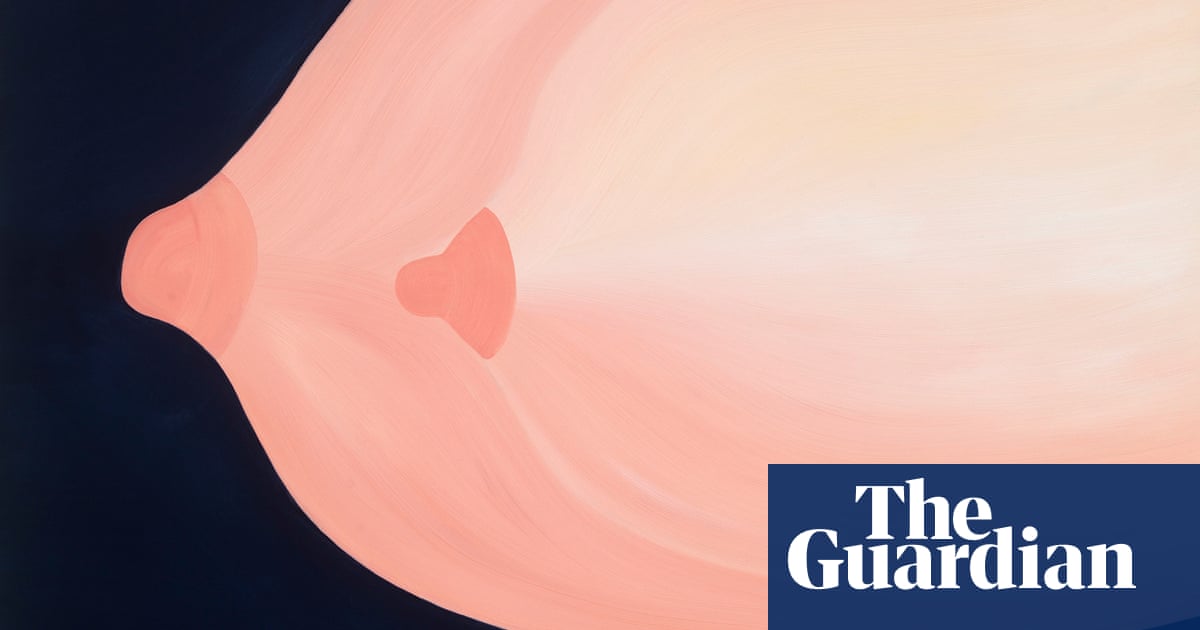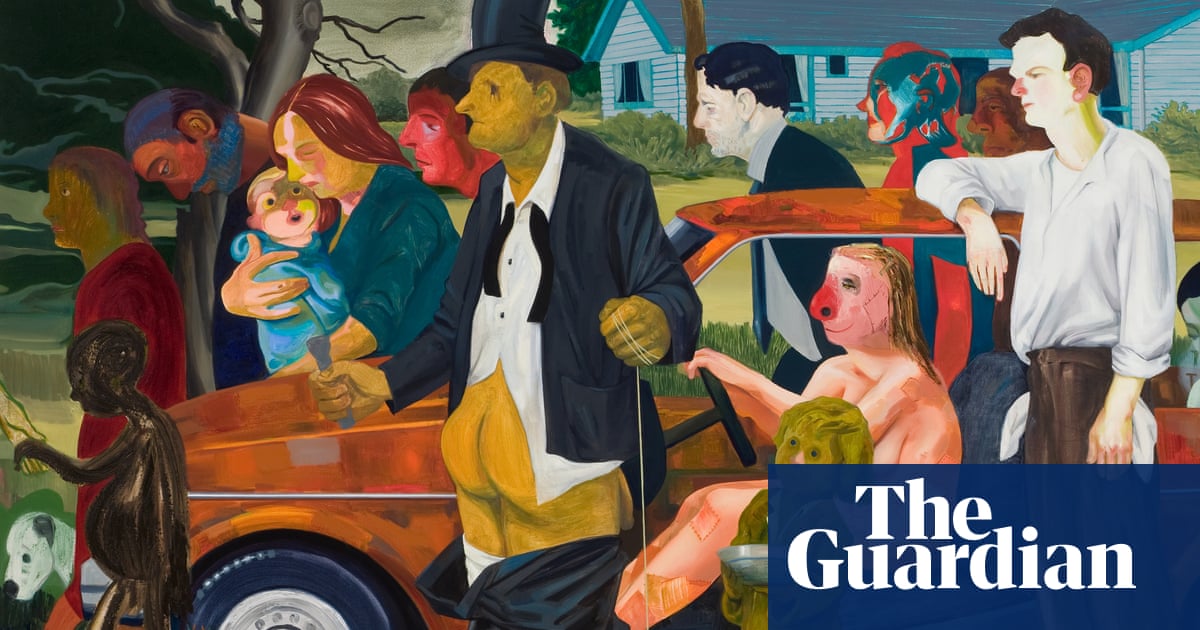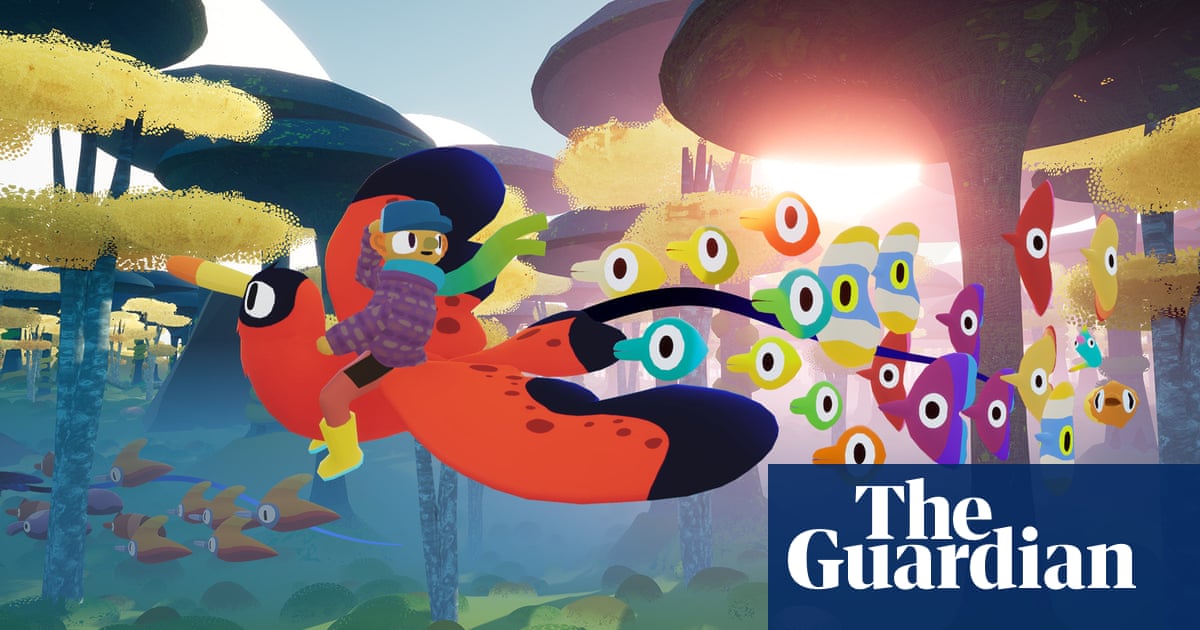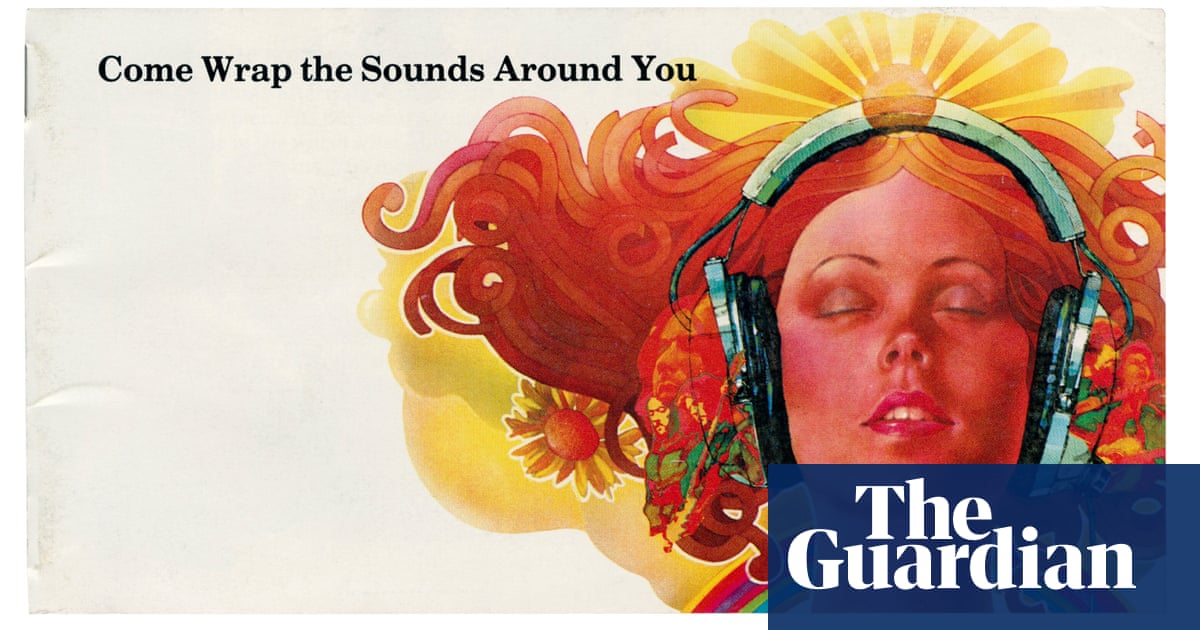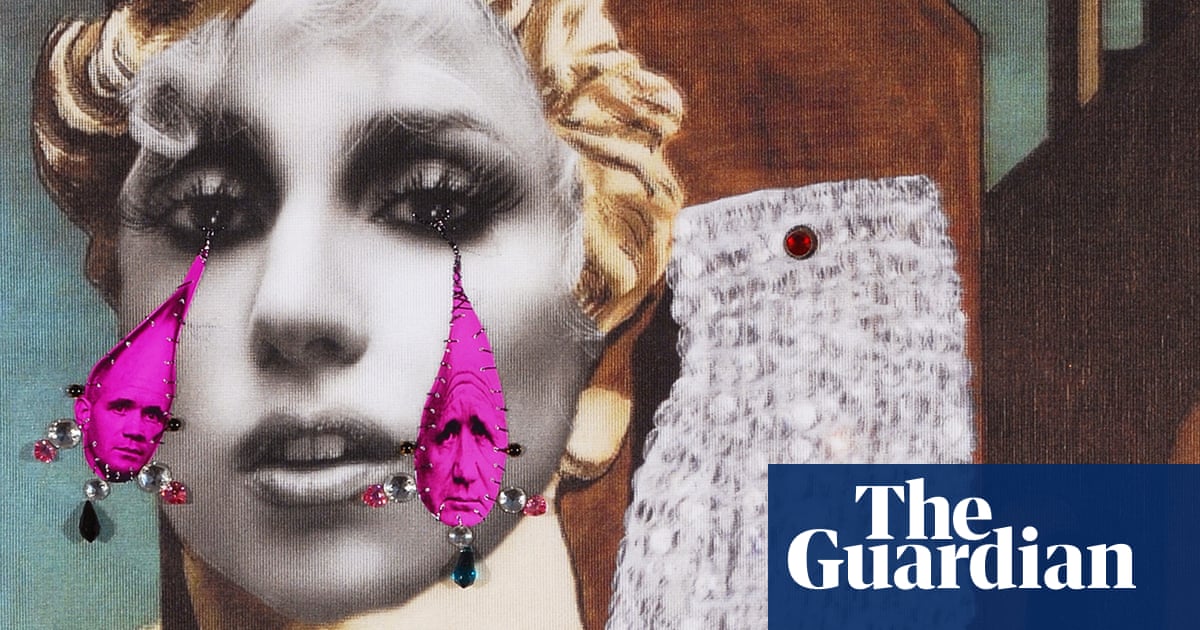
Since tears express intense emotion, you’d think great painters would have fallen over themselves to depict people crying. Wrong, says Francesco Vezzoli. “Just Google books about tears in art,” says the Italian artist via video call. “There aren’t any. There are some tears in Hieronymus Bosch’s The Garden of Earthly Delights, but that’s an extreme painting. You should find tears on the face of Christ, but that happens only once.” This is in Antonello da Messina’s Ecce Homo, from 1475. “Go to the Kunsthistorischen Museum in Vienna: no tears. In European religious paintings, there should be tears on the faces of every saint because they all died for martyrdom. But tears are very rare.”
To correct this remarkable oversight, over the past 15 years Vezzoli has embroidered tears on to reproductions of paintings by great Renaissance artists from Giotto to Botticelli and Lotto. Sewing has been long part of Vezzoli’s practice: he used to frequent a needlepoint shop called Creativity while at Central St Martin’s in London in the early 1990s (when he wasn’t clubbing, that is, or writing his dissertation on homoeroticism in Brazilian soap operas).
This week, he will show these embroidered works in the Museo Correr in Venice in an exhibition called Musei delle Lacrime, or Museums of Tears, that turns modern icons such as Kim Kardashian into classical saints crying balloon-shaped tears. “It’s a queered up history of art because I made everybody very emotional and very glittery,” Vezzoli says.
Is he someone who cries easily himself? “Do you remember we used to have those things called MP3s?” Vezzoli asks. “My friend Luca, who I call the pornographer of pop because he only listens to Kylie and Madonna, scrolled down my list of songs and said, ‘You are drawn to melancholic music so badly!’” Like what? “Mercy Street by Peter Gabriel – but if people read that they’ll think I’m 75 years old.” He’s actually 53.
Vezzoli suggests that his upbringing in Brescia in northern Italy may also have made him unabashedly emotional. “I was raised by women: grandmothers, aunties and my mother,” Vezzoli says. “And I was loved to a degree that was overwhelming. Every birthday, my grandma would bake a cake for every year I was celebrating. So when I was three I got three cakes. Seven, seven cakes – until we reached 14!”
Through his maverick work, Vezzoli has anticipated many of the current arguments about the artistic canon and the role of museums in preserving it. He has painted ancient busts to reveal what they would have looked like in antiquity. He has put artefacts from the Museo Nazionale Romano into installations drawing on the cinematic history of ancient Rome. And he is about to make new heads for 12 sculptures at the Museum of Capodimonte in Naples. He made his name, however, with elaborate video works in which, using his formidable charm, he managed to involve celebrities – most famously his 2005 take on Caligula, which starred Helen Mirren, Courtney Love and Gore Vidal, while Donatella Versace designed the togas.
In recent years, Vezzoli has been more interested in ancient icons. “I worked with Lady Gaga and Jessica Chastain,” Vezzoli says – the former in a 2009 performance that saw her playing a piano decorated by Damien Hirst in a hat designed by Frank Gehry while members of the Bolshoi Ballet danced along. “After that I should have started chasing Emma Stone, one of the greatest actors of her generation, but how can I be obsessed by someone I’ve only seen three movies of? I felt I had dealt with the Hollywood mythology, and should go back to the real mythology.”
Venice’s Museo Correr is a prestigious space, situated on St Mark’s Square. It was redesigned in the 1960s by the revered modernist architect Carlo Scarpa, and Vezzoli says the easels in the gallery alone would be worth half a million pounds each at auction. Exhibiting there, he adds, is “like being an overweight elephant in a crystal store – but all the crystal pieces are from 500 years ago. You very rarely see very old glasses in museums because they mostly got broken.” No pressure then? “I think the alchemy is beautifully poisonous,” he muses with a smile.
As much as he likes to question the past, Vezzoli has great reverence for it. He is excited to see what his friend Nicholas Cullinan will do as the incoming director of the British Museum. “Why should we tear down the British Museum or throw a bomb at it when we can give it to Nick to revamp?” he says.
So what about those who say the artistic canon is full of irrelevant dead white males? “Whenever you engage in a war with the past, you’ll end up a loser,” Vezzoli says. “There’s no way to beat Tintoretto, the Elgin marbles or Canova. But if you have a different view of art and how it should be experienced, well, build a new canon. We’ll all be very excited to see it.”
Francesco Vezzoli: Musei Delle Lacrime is at Museo Correr, Venice, from 17 April to 24 November




